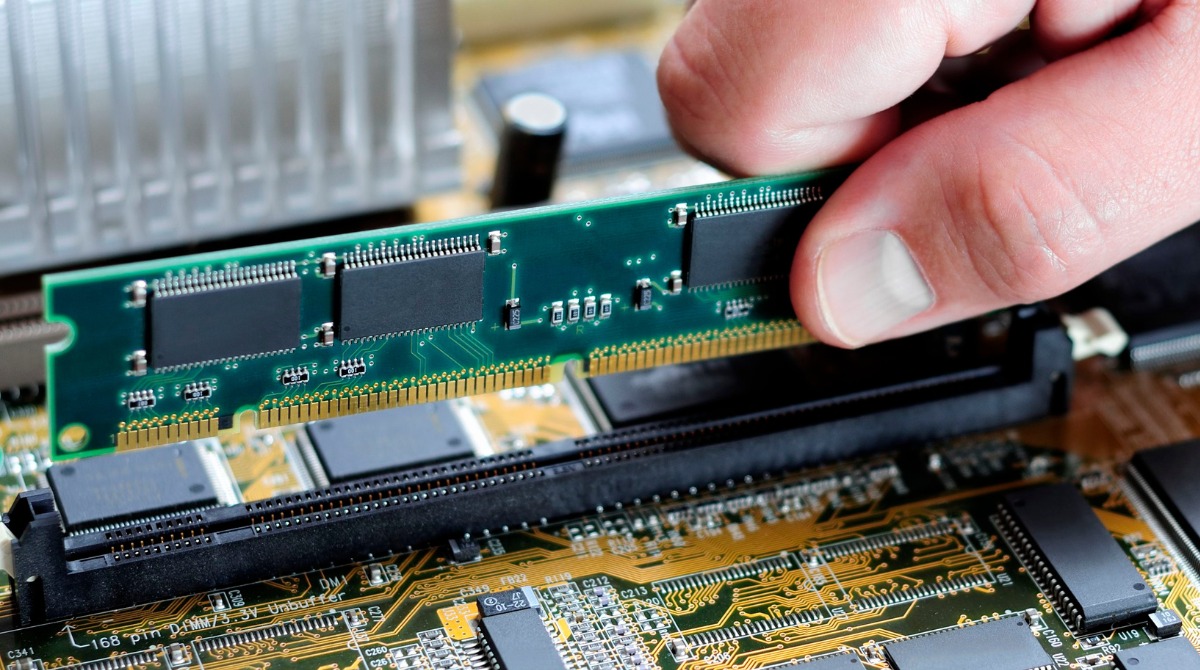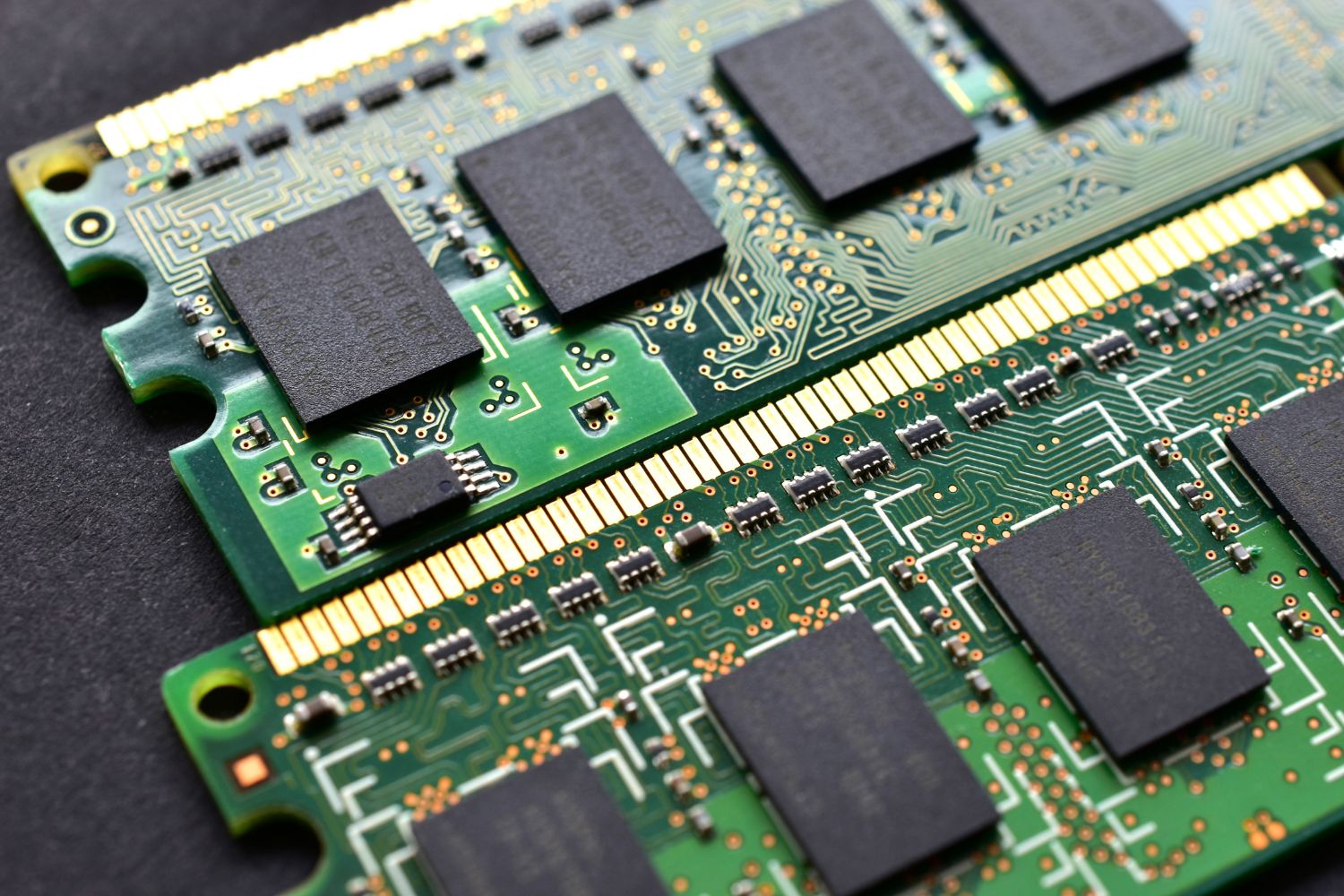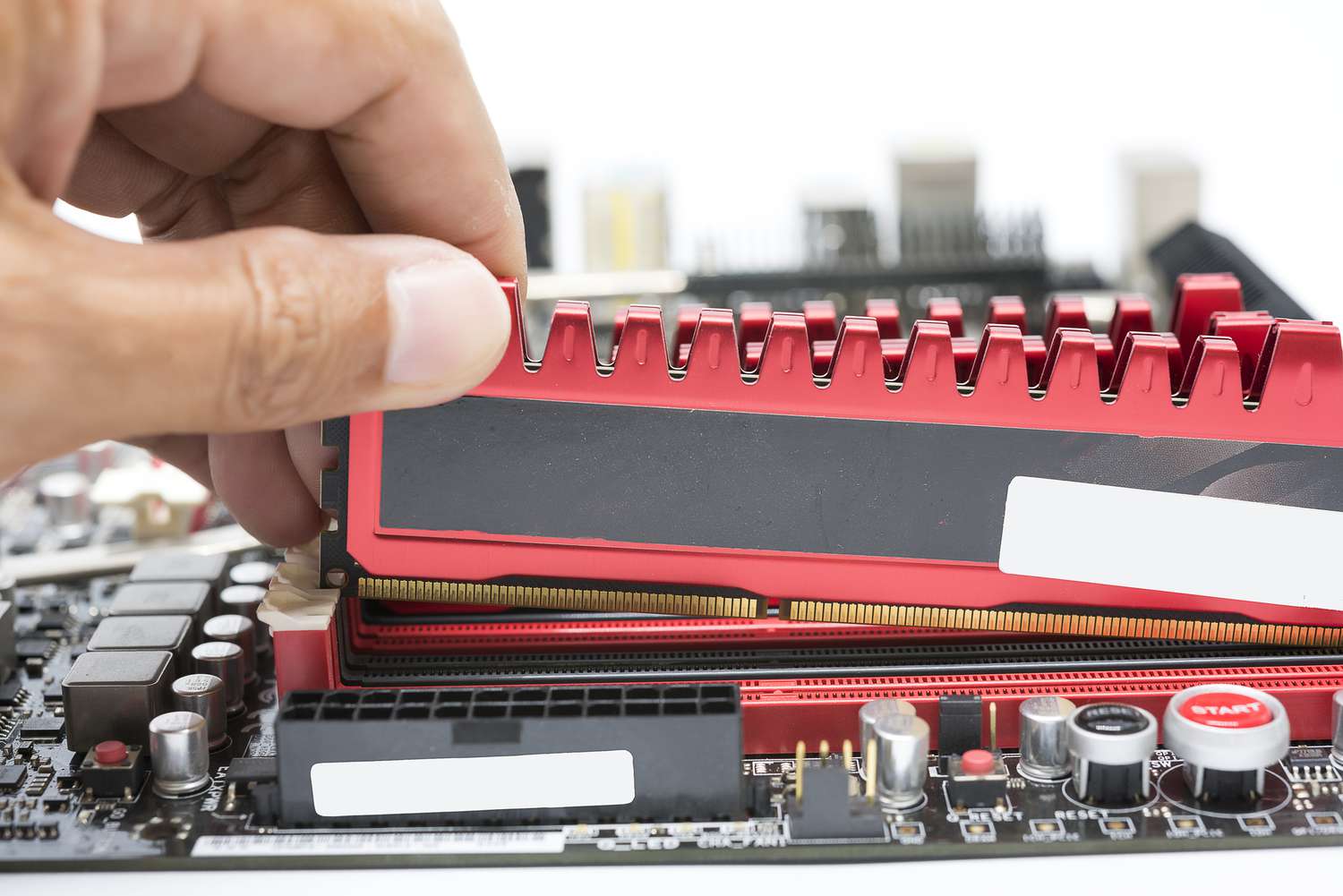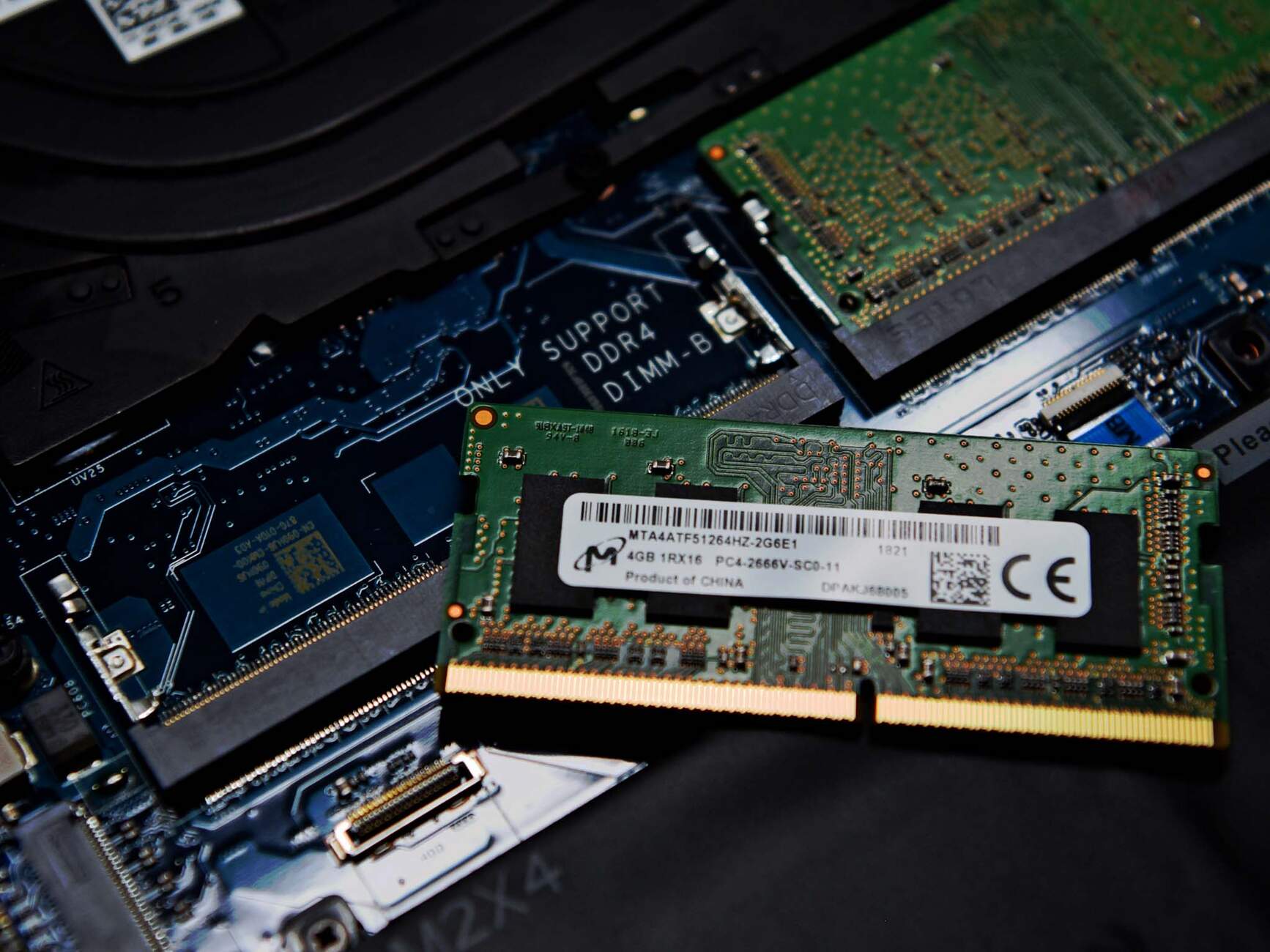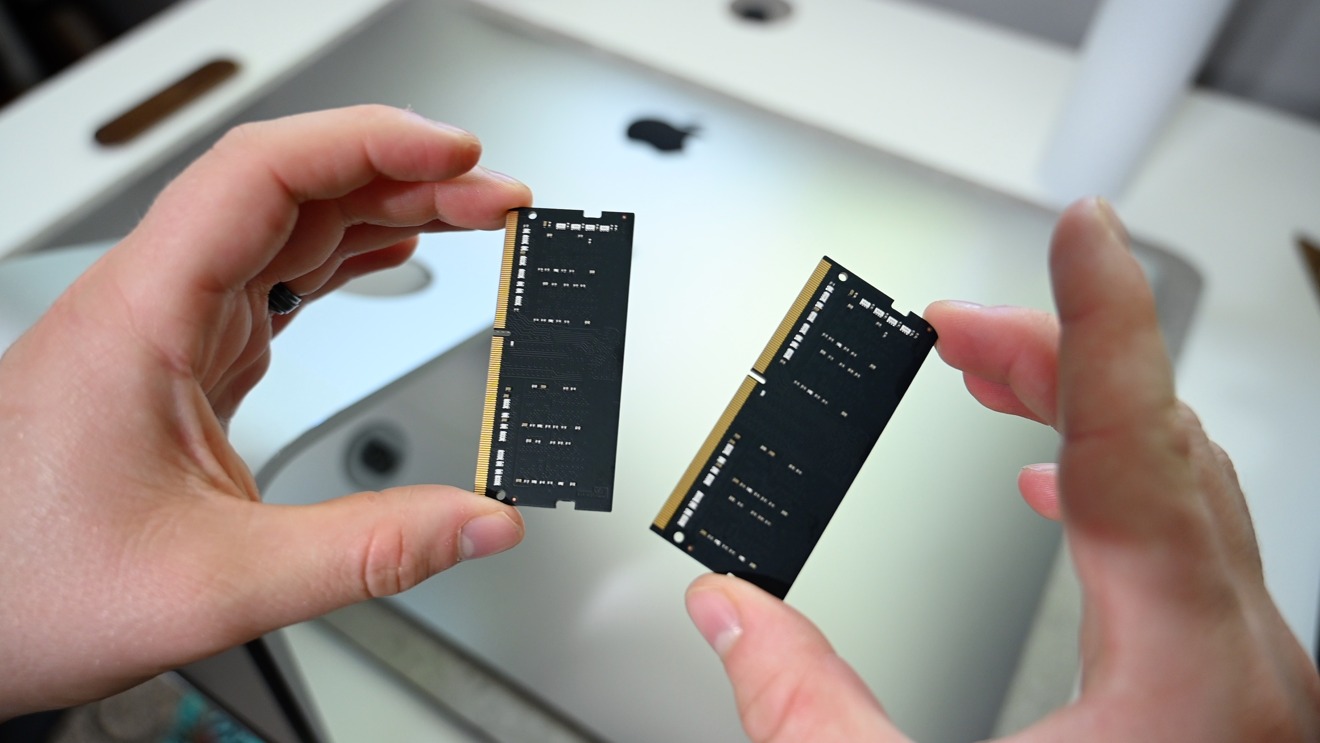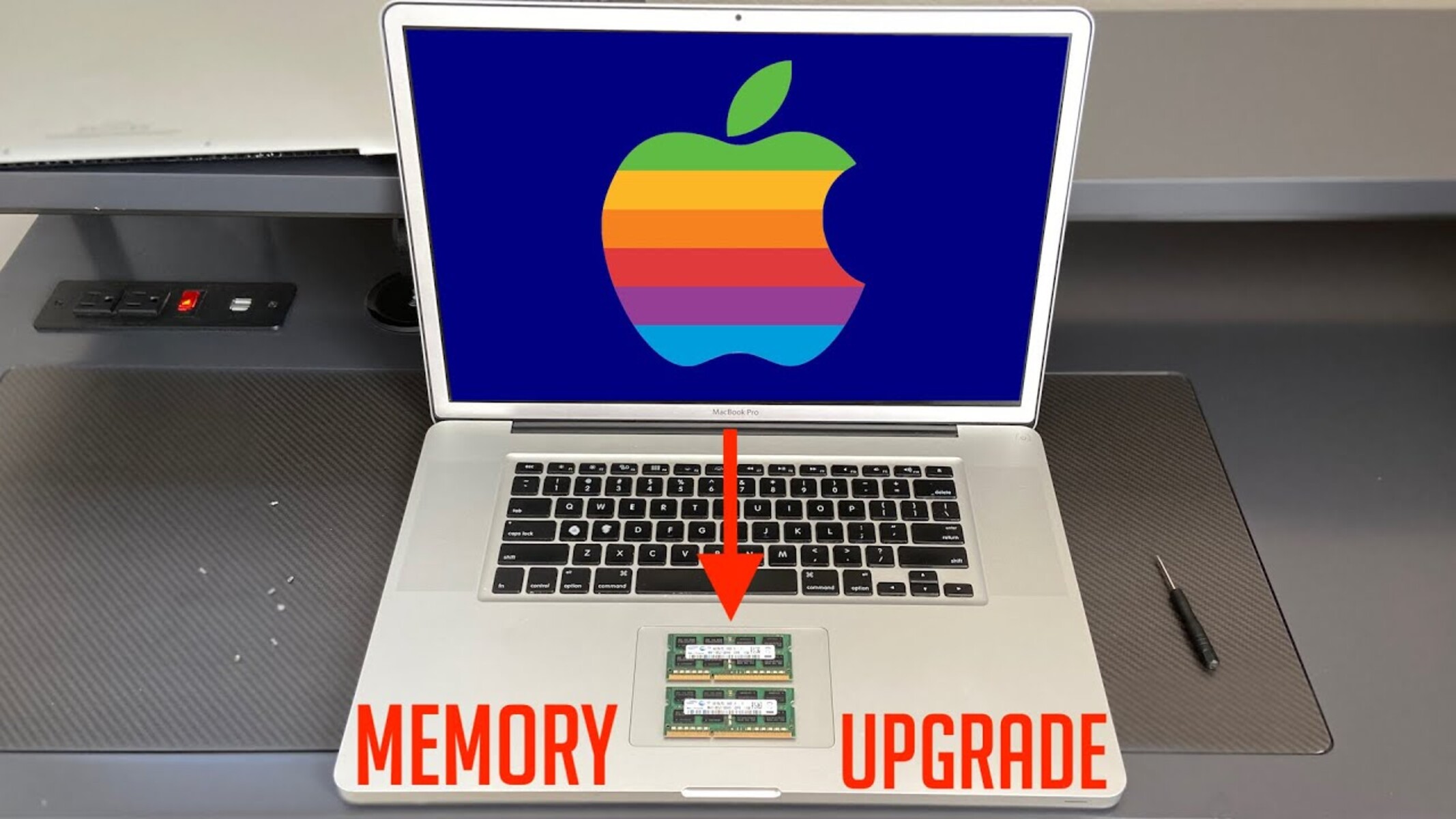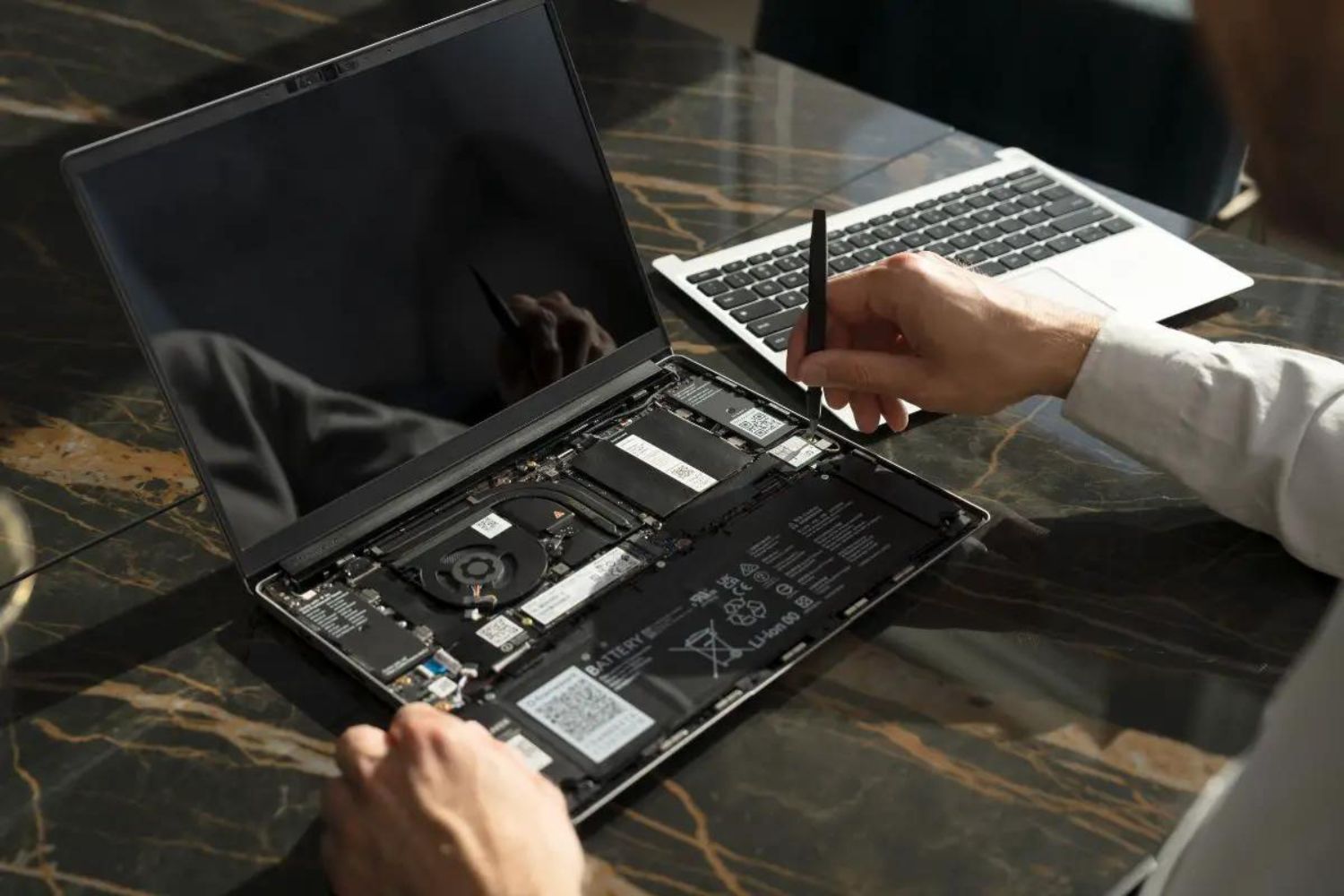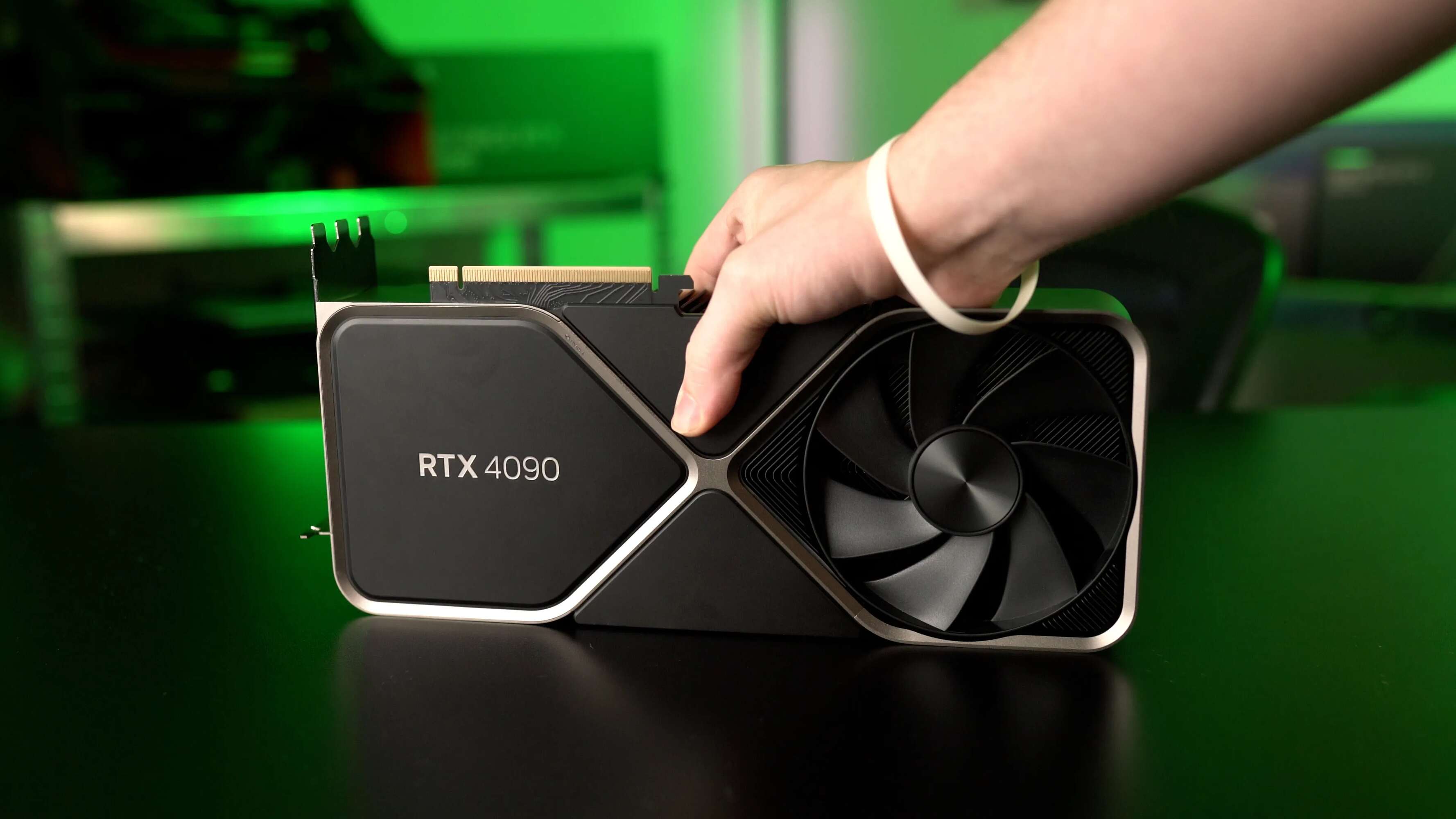Introduction
Welcome to the world of RAM, a crucial component in your computer’s performance. RAM, which stands for Random Access Memory, plays a vital role in storing and accessing data for your computer’s programs and operating system. Whether you’re a tech enthusiast, a casual user, or a professional, knowing your RAM model can be beneficial in many ways.
In this article, we will explore different methods to help you identify your RAM model. From checking the label on your RAM module to using system tools and third-party software, we will cover a range of options that suit various operating systems. Knowing your RAM model can be useful for several reasons, such as upgrading or replacing your RAM, troubleshooting compatibility issues, or simply satisfying your curiosity.
Upgrading your RAM is one of the most effective ways to boost your computer’s performance. By knowing your RAM model, you can ensure compatibility when purchasing new RAM modules. Different RAM models come with varying specifications, such as speed, capacity, and form factor. Having this information at hand will help you make informed decisions and save you from potential headaches down the road.
Identifying your RAM model can also come in handy when troubleshooting compatibility issues or diagnosing system problems. In some cases, mismatched RAM modules can cause stability issues or prevent your computer from booting properly. By knowing your RAM model, you can easily determine if you have the correct type and configuration for your system.
Furthermore, knowing your RAM model can be helpful when seeking technical support. Whether you’re contacting the manufacturer or interacting with online communities, providing accurate information about your RAM can expedite the troubleshooting process and ensure that you receive the most relevant advice or solutions.
In the following sections, we will walk you through different methods to identify your RAM model. Whether you’re a Windows, macOS, or Linux user, we have you covered. So, let’s dive in and learn how to find your RAM model!
What is RAM?
RAM, short for Random Access Memory, is a type of computer memory that is essential for the smooth operation of your computer. It serves as a temporary storage space where data and instructions are stored and quickly accessed by the computer’s processor. Unlike permanent storage devices like hard drives or solid-state drives, RAM is volatile, meaning its contents are lost when the power is turned off.
RAM plays a crucial role in multitasking and overall system performance. When you open an application or run a program, it is loaded into the RAM so that the processor can quickly access the necessary data and instructions. The more RAM your computer has, the more applications and data it can store in the memory, resulting in smoother and faster performance.
RAM operates at a much faster speed compared to permanent storage devices, hence its importance in supporting the temporary storage needs of your computer. It helps to reduce the time it takes for data to be retrieved and processed by the processor, resulting in improved system responsiveness and faster execution of tasks.
RAM comes in various sizes, commonly measured in gigabytes (GB). The amount of RAM you have determines the number of programs you can run simultaneously without experiencing a slowdown in performance. For basic computing tasks like web browsing and document editing, 4 to 8 GB of RAM is usually sufficient. However, for more demanding applications like video editing, gaming, or running virtual machines, 16 GB or more may be required to ensure smooth operation.
In addition to size, RAM also has different speed ratings, usually measured in megahertz (MHz). Higher speed RAM modules allow for faster data transfer and processing, resulting in improved system performance. However, it is important to note that the speed of your RAM is also dependent on the compatibility and limitations of your computer’s motherboard.
Overall, RAM is a critical component that directly impacts your computer’s performance. It acts as a bridge between the processor and storage devices, enabling seamless data access and rapid execution of applications. Understanding how RAM works and knowing the specifications of your RAM model can help you optimize your system’s performance and make informed decisions when it comes to upgrading or troubleshooting your computer’s memory.
Why do you need to know your RAM model?
Knowing your RAM model can provide you with valuable information that can benefit you in several ways. Whether you’re a tech-savvy individual or an average computer user, understanding your RAM model is essential for optimizing your system’s performance, troubleshooting compatibility issues, and making informed decisions about upgrades or replacements.
One of the primary reasons to know your RAM model is for upgrading or expanding your computer’s memory. Upgrading your RAM can significantly improve your system’s overall performance, allowing for smoother multitasking, faster program execution, and improved responsiveness. By knowing your RAM model, you can ensure compatibility when purchasing new RAM modules, ensuring that they are the right type, speed, and capacity for your system. This knowledge also helps you avoid wasting time and money on incompatible RAM, as using the wrong type of RAM can cause stability issues or prevent your computer from booting up properly.
In addition to upgrading your RAM, knowing your RAM model is crucial for troubleshooting compatibility issues. If you’re experiencing system crashes, freezes, or other instability problems, mismatched or faulty RAM modules could be the culprit. By identifying your RAM model, you can verify if the installed RAM is compatible with your motherboard and whether it meets the required specifications. This knowledge allows you to diagnose and resolve any compatibility issues more effectively, potentially saving you from costly repairs or unnecessary hardware replacements.
Furthermore, having knowledge of your RAM model is beneficial when seeking technical support or assistance. When contacting the manufacturer or participating in online forums, providing accurate information about your RAM can help expedite the troubleshooting process. It enables the support personnel or community members to understand your system configuration better, allowing them to provide relevant advice and solutions tailored to your specific situation.
Knowing your RAM model can also help you make informed decisions concerning your computer’s memory. Whether you are considering upgrading your RAM, replacing faulty modules, or building a new computer from scratch, having the correct information about your RAM model allows you to choose the right components for your system. It enables you to select RAM modules that match your system’s specifications, ensuring optimal compatibility and performance.
Overall, knowing your RAM model empowers you to optimize your system’s performance, troubleshoot compatibility issues, seek appropriate technical support, and make informed decisions about your computer’s memory. Understanding the specifications and details of your RAM model gives you greater control over your system’s functionality and allows you to enhance your computing experience to its fullest potential.
Method 1: Checking the label on your RAM module
A straightforward way to identify your RAM model is by checking the label on the physical RAM module installed in your computer. The label usually contains important information about the RAM, including the brand, model number, capacity, and speed. Here’s how you can check the label on your RAM module:
- Shut down your computer and unplug it from the power source.
- Open your computer’s case to access the internal components. Refer to your computer’s user manual or manufacturer’s website for specific instructions on how to open the case.
- Locate the RAM modules, which are rectangular cards plugged into the motherboard. Depending on your computer, there may be one or multiple RAM modules installed.
- Carefully remove the RAM module by gently pushing the side clips away from the module and pulling it straight out.
- Examine the label on the RAM module. Look for information such as the brand name (e.g., Kingston, Corsair), model number (e.g., DDR4-2400), capacity (e.g., 8GB), and speed (e.g., PC3-12800).
- Take note of the model number and any other relevant details. You can then search for the model number online to find more detailed specifications about your RAM module.
- Gently reinsert the RAM module back into its slot on the motherboard, ensuring it is properly seated and the side clips securely lock it in place.
- Close your computer’s case and plug it back into the power source.
By following these steps, you can easily check the label on your RAM module and identify its brand, model number, capacity, and speed. This method provides you with accurate information about your RAM, allowing you to make informed decisions when it comes to upgrading or replacing your computer’s memory modules. If you have multiple RAM modules installed, repeat the process for each module to ensure you capture the details of all your installed RAM.
Method 2: Using the System Information tool on Windows
Windows provides a built-in tool called System Information, which allows you to view detailed information about your computer’s hardware and software. This tool can also help you identify your RAM model without the need to open your computer’s case. Follow these steps to use the System Information tool on Windows:
- Press the Windows key + R to open the Run dialog box.
- Type “msinfo32” (without quotes) in the Run dialog box and press Enter. This will open the System Information window.
- In the System Information window, navigate to the left pane and expand the “Components” category.
- Scroll down and click on “Memory” to view the details of your RAM.
- In the right pane, you will find information about your RAM, including the manufacturer, model, capacity, and speed.
- Take note of the model number and any other relevant details for future reference.
- Close the System Information window when you’re done.
Using the System Information tool provides a convenient way to identify your RAM model on Windows. It saves you from the hassle of opening your computer’s case and allows you to access the information quickly. By following these steps, you can easily find details about your RAM, such as the manufacturer, model number, capacity, and speed. This information is valuable when making decisions related to upgrading, troubleshooting compatibility issues, or seeking support for your RAM.
Method 3: Using the About This Mac feature on macOS
If you’re using a Mac computer, you can quickly find information about your RAM model using the built-in “About This Mac” feature. This method provides a user-friendly way to access detailed information about your RAM without the need to open your Mac or run any additional software. Follow these steps to use the About This Mac feature on macOS:
- Click on the Apple menu icon in the top-left corner of your screen.
- From the drop-down menu, select “About This Mac.” A new window will open.
- In the About This Mac window, click on the “Overview” tab if it is not already selected.
- Within the Overview tab, you will find information about your Mac’s processor, memory, and other system details.
- Click on the “Memory” option to view the details of your RAM.
- In the Memory section, you will see information such as the total memory capacity, memory type, and memory speed.
- Take note of the relevant details, such as the memory type and speed, as they can assist you when upgrading or troubleshooting your RAM.
- Close the About This Mac window when you’re finished.
Using the About This Mac feature on macOS provides a simple and convenient way to identify your RAM model. By following these steps, you can easily retrieve information about your RAM’s capacity, type, and speed. The details obtained from About This Mac can be invaluable when making decisions related to RAM upgrades, compatibility troubleshooting, or seeking technical support for your Mac.
Method 4: Using the Terminal command on macOS or Linux
If you prefer using command-line tools, you can identify your RAM model on macOS or Linux by using the Terminal application. The Terminal allows you to execute commands to retrieve system information, including details about your RAM. Follow these steps to use the Terminal command and find your RAM model:
- Open the Terminal application on your macOS or Linux computer. You can usually find it in the Utilities folder on macOS or search for “Terminal” in the applications menu on Linux.
- Once the Terminal window is open, type the following command and press Enter:
- If prompted, enter your administrator password to allow the command to run.
- The Terminal will display detailed information about your RAM, including the manufacturer, model number, capacity, speed, and other relevant details.
- Take note of the model number and any other relevant details for future reference.
- Close the Terminal window when you’re done.
sudo dmidecode -t memoryUsing the Terminal command on macOS or Linux provides a command-line alternative to identify your RAM model. It offers a more technical approach for those who are comfortable with the Terminal and prefer using command-line tools. By following these steps and executing the Terminal command, you can retrieve detailed information about your RAM, including the manufacturer, model number, capacity, and speed. This knowledge allows you to make informed decisions when it comes to RAM upgrades, troubleshooting compatibility issues, or seeking technical support.
Method 5: Using third-party software
Another convenient way to identify your RAM model is by using third-party software specifically designed for system information and hardware analysis. These tools provide a user-friendly interface that displays detailed information about your computer’s components, including RAM. Here’s how you can use third-party software to find your RAM model:
- Research and choose a reliable third-party software that specializes in system information or hardware analysis. Some popular options include CPU-Z, Speccy, and HWiNFO.
- Download and install the selected software on your computer, following the provided instructions.
- Launch the software once it is installed and running on your computer.
- Navigate to the memory or RAM section within the software’s interface. This section usually provides detailed information about your RAM, including the manufacturer, model number, capacity, speed, and other relevant details.
- Take note of the model number and any other relevant details for future reference.
- Close the third-party software when you’re finished.
Using third-party software presents a user-friendly and comprehensive approach to identify your RAM model. These tools offer a wide range of system information and hardware analysis, saving you the trouble of manually checking labels or using built-in system tools. By using third-party software, you can easily find detailed information about your RAM, including the manufacturer, model number, capacity, and speed. This knowledge is valuable when it comes to making decisions related to RAM upgrades, troubleshooting compatibility issues, or seeking technical support for your computer’s memory.
Conclusion
Identifying your RAM model is essential for optimizing your system’s performance, troubleshooting compatibility issues, and making informed decisions about upgrading or replacing your computer’s memory. In this article, we explored five different methods to help you find your RAM model: checking the label on your RAM module, using the System Information tool on Windows, utilizing the About This Mac feature on macOS, using the Terminal command on macOS or Linux, and using third-party software for system information.
Checking the label on your RAM module provides accurate information about your RAM model, including the brand, model number, capacity, and speed. This method requires you to physically open your computer’s case.
Using the System Information tool on Windows allows you to view detailed information about your computer’s hardware, including your RAM model, without the need to open your computer’s case. It provides a user-friendly interface for accessing vital system details.
The About This Mac feature on macOS offers an easy way to find your RAM model. It provides a comprehensive overview of your Mac’s hardware, including RAM details, allowing you to quickly access the necessary information.
By using the Terminal command on macOS or Linux, you can retrieve system information, including your RAM model, through a command-line interface. This method is suited for those who are comfortable with the command line and prefer a more technical approach.
Using third-party software designed for system information and hardware analysis provides a convenient and comprehensive way to identify your RAM model. These software tools offer a user-friendly interface and detailed information about your RAM and other hardware components.
Knowing your RAM model empowers you to make informed decisions when it comes to upgrading or replacing your RAM, troubleshooting compatibility issues, and seeking technical support for your computer’s memory. By following the methods outlined in this article, you can easily find detailed information about your RAM, ensuring optimal performance and compatibility for your system.







